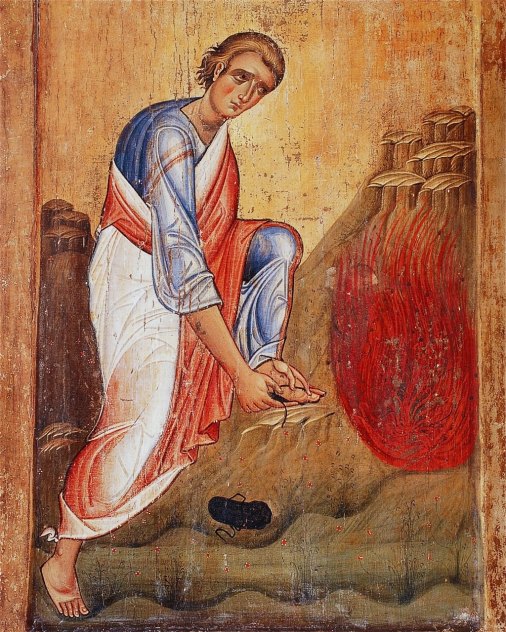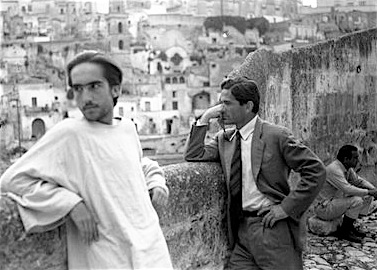
Rembrandt van Rijn, The Return of the Prodigal Son, c. 1661–1669 (Hermitage Museum, Saint Petersburg)
Sometimes I lead retreats to explore correlations between biblical narratives and our own stories. It’s not just a matter of putting ourselves in a given Bible story as a method of interpreting it. We also need to let it interpret us, as we discover the biblical motifs which are playing out in the particular circumstances of our own lives. What is my creation story, what is your exodus story, what is each one’s death and resurrection story?
At one such retreat, we considered Jesus’ parable of the Prodigal Son. After studying the text, we tried out various ways of retelling it in our own words. Then we divided into three groups: Fathers, prodigal sons, and elder brothers. Membership in each group was determined by chance, although it turned out that the “elder brothers” consisted mostly of firstborn children.
Each group was asked to wrestle with their assigned character. What do you feel about this character? What does the story tell you about him? What does the story leave unsaid? Then they were invited to share a related story from their own lives. Tell about the struggles of being a parent, a child, or a sibling. Tell about a time you were forgiven, or needed to forgive. Tell about a time you felt neglected or ignored, envious or resentful.
One man said he had been disappointed at first to draw the father’s group, because he always related more strongly to the elder brother. As the oldest child in his family, he had some of the issues common to that role. He knew the burden of wanting to live up to his parents’ expectations, to be “perfect,” obedient, one who pleases by getting everything right. He had also experienced some envy and resentment of younger siblings who seemed more carefree and less responsible.
But as he listened to others in the group engage with the father’s side of the story, it occurred to him that he himself had actually been a father for as long as he had been only a son and brother. Maybe, he said, it was time to rethink his own story and who he was in it.
In the early nineties, Henri Nouwen wrote “a meditation on fathers, brothers, and sons” using the parable of the Prodigal Son along with Rembrandt’s famous painting of the moment when the errant child is welcomed home. Like the people in my retreat, he found critical insights into his own life in each of the characters. And in doing so, he realized that there were two sons, not just one, who went astray from their father’s will, into “a distant country,” the place of alienation.[i]
The younger son’s sins may have been more dramatic and colorful, but the elder brother’s bitter and jealous heart grieved his father just as much. Both sons are lost. Both need to be welcomed “home.” As Rembrandt’s painting shows, the elder stands in the shadows, separated from the radiant light surrounding the father and his youngest child.
“There is not only the light-filled reconciliation between the father and the younger son, but also the dark, resentful distance of the elder son. There is repentance, but also anger. There is communion, but also alienation. There is the warm glow of healing, but also the cooling of the critical eye; there is the offer of mercy, but also the enormous resistance against receiving it.”[ii]
Whether the elder brother will be able to step out of his darkness into love’s radiance remains unknown in both the painting and the original parable. But the father has made it clear that his parental love will never be withdrawn. Like the loving mercy of God, his welcoming arms remain ever extended and expectant, now and forever. As Nouwen writes, “The heart of the father burns with an immense desire to bring his children home.”[iii]
Nouwen describes the differences between the father’s hands in Rembrandt’s painting. His left hand is strong, masculine, gripping his son encouragingly. His right hand seems more refined, almost feminine, offering the caress of consolation. The father’s red cloak also conveys shelter and protection, like the enfolding wings of a mother bird.
Love so amazing, so divine, has a cost. It does not always produce happy endings. In the “fathers” group at the retreat, one woman told us about her own prodigal son, a forty-year old man who had struggled for years with his own lostness. “I welcomed him home every time,” she said, “and then he would just break my heart all over again.” Six months before our retreat, he had committed suicide.
When we hear the parable, it is natural to focus on the prodigal’s experience of unconditional, unmerited welcome. We all long to hear the word of mercy for ourselves: weary pilgrim welcome home. But Nouwen won’t let us stay there. Although we each need to make our way on the difficult journey home, in the end we are called to claim the role of the father as well. Forgiven so much, may we also become the ones who forgive, whatever it costs.
“His outstretched hands are not begging, grasping, demanding, warning, judging, or condemning. They are hands that only bless, giving all and expecting nothing … As I look at my own aging hands, I know that they have been given to me to stretch out toward all who suffer, to rest upon the shoulders of all who come, and to offer the blessing that emerges from the immensity of God’s love.”[iv]
[i] Henri J. M. Nouwen, The Return of the Prodigal Son: A Meditation on Fathers, Brothers, and Sons (New York: Doubleday, 1992)
[ii] ibid., 126-7
[iii] ibid., 89
[iv] ibid., 127-8, 130






